New York City, Holland and Belgium in the Springtime
April 19 - May 6, 2014
Part Two - Amsterdam area
We took the pre-trip extension offered by Grand Circle to stay a few
days in Amsterdam before beginning our river cruise.
The Kingdom of the Netherlands, commonly known as the Netherlands,
is a sovereign state and constitutional monarchy with territory in western
Europe and in the Caribbean. The Kingdom is celebrating its 200 years in
a series of festive occasions spanning from 2013 to 2015, the actual year
of the anniversary. Amsterdam is located in the western Netherlands, in the
province of
North Holland. The river Amstel terminates in the city center
and connects
to a large number of canals that eventually terminate in the IJ lake.
Amsterdam has more canals than Venice.
The Netherlands is a representative parliamentary democracy organized as
a unitary state. Its administration consists of the Monarch and the Council
of Ministers, which is headed by a Prime Minister. The people are represented
by the States General of the Netherlands, which consists of a House of
Representatives and a Senate.
Page Three - Amsterdam and Zaanse Schans

Amsterdam - view over the IJ
The IJ, sometimes shown on old maps as "Y" or "Ye" is a lake,
formerly a bay, in the Dutch province of North Holland. It is known
for being Amsterdam's waterfront. Sometimes it is wrongly considered a river.
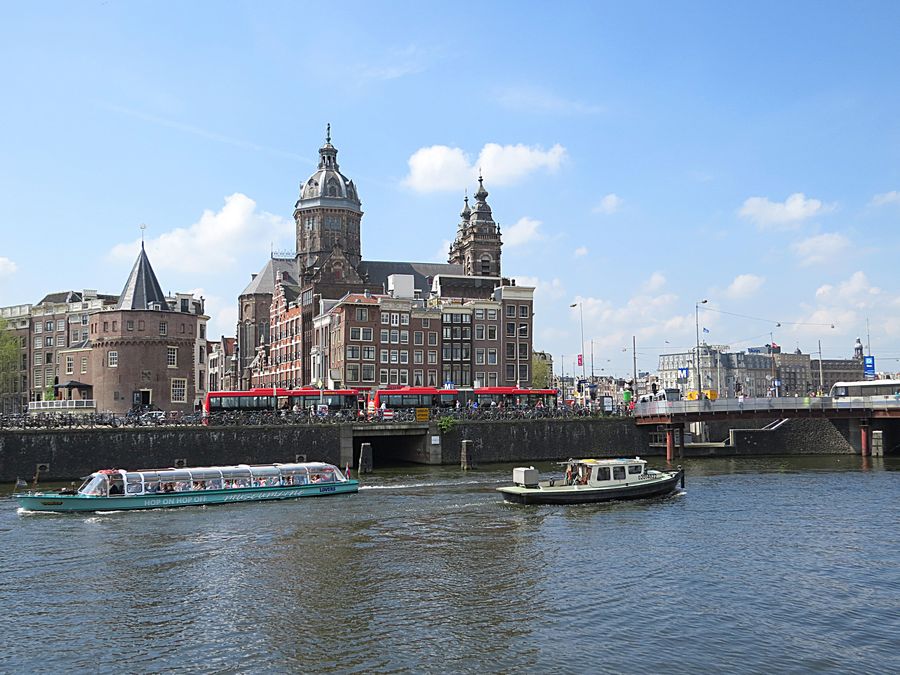
The Basilica of Saint Nicholas - located in the Old Center district of
Amsterdam. It is the city's major Catholic church.

Centraal Station in Amsterdam
Most tram lines connect it to the rest of the city.
Amsterdam Centraal is the largest railway station of Amsterdam
and a major national railway hub. Used by 260,000 passengers a day, it is the
second-busiest railway station in the country after Utrecht Centraal and the
most visited national heritage site of the Netherlands.
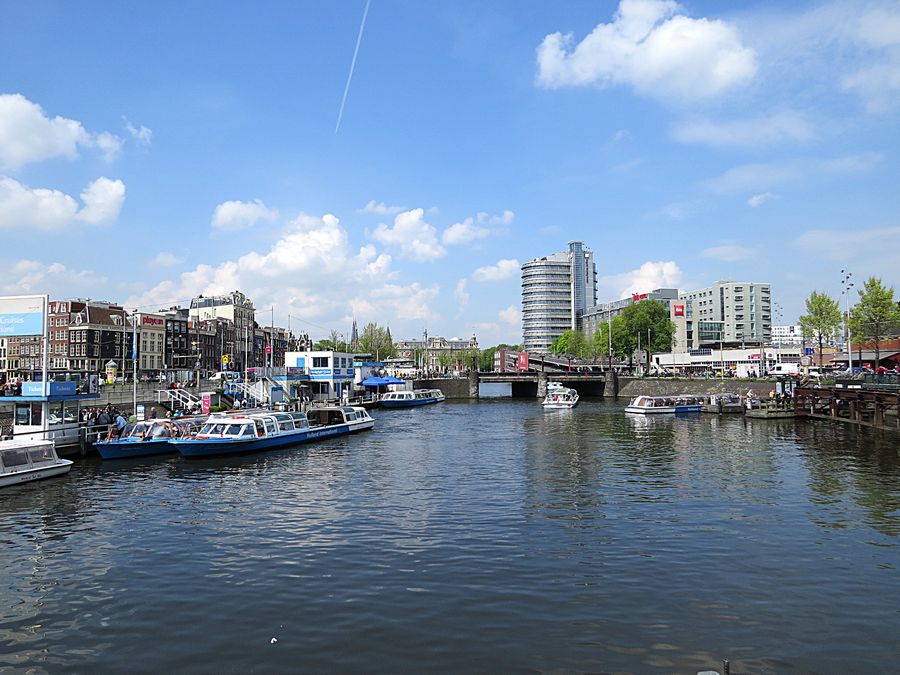
Amsterdam is known for the series of canals that encircle in a horseshoe
shape and crisscross each other throughout the city even though it is
below-sea-level. As such, the residents have had to find ways of dealing
with the water and soft ground. Houses are built on sturdy pilings to
assure a solid foundation. Although you see many cock-eyed canal houses,
some held up by huge logs, many buildings have been where they
are for centuries.
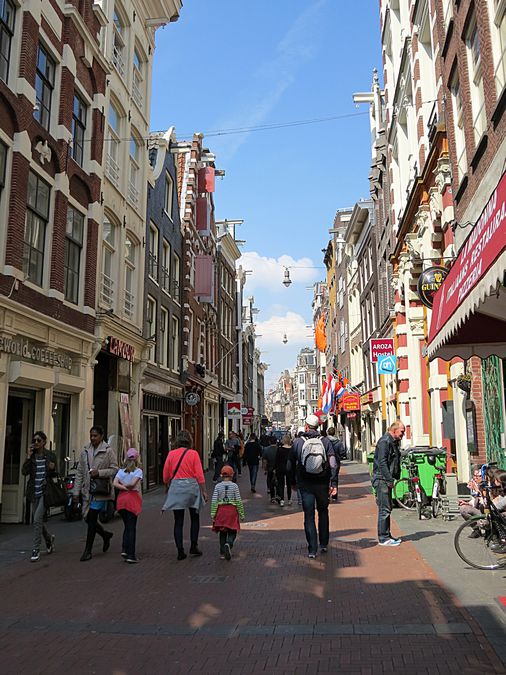
A street scene in Amsterdam

The Former Amsterdam Main Post Office, currently a shopping mall,
is a monumental building in Amsterdam. It was built in 1895–1899 in
Neo-Gothic and Neo-Renaissance style. The building has been a
monument since July 9, 1974, and is one of the Top 100 Dutch heritage sites.

Interesting architecture typical of the city.
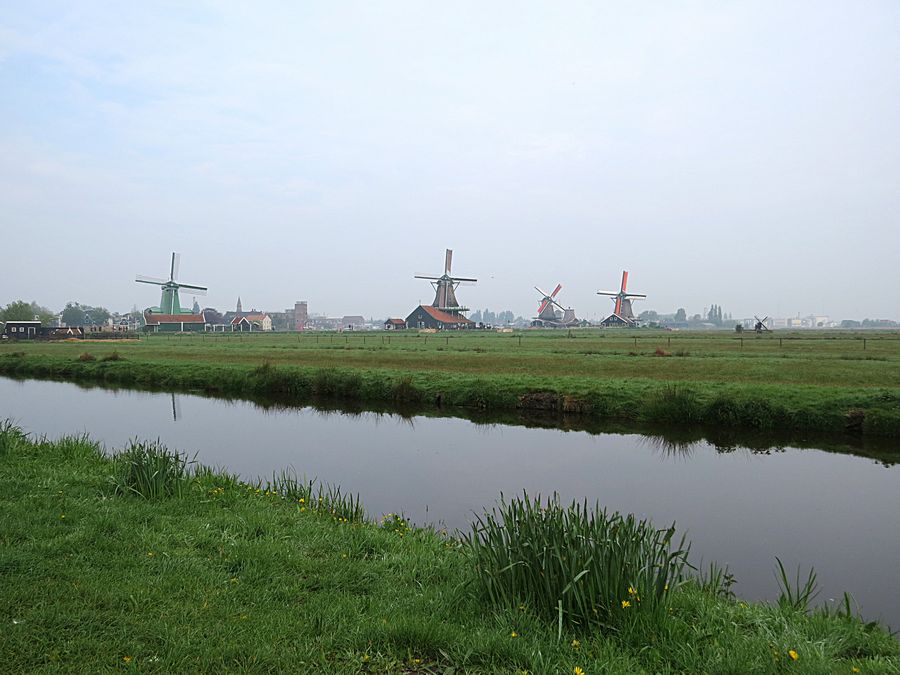
Zaanse Schans - where we took a half day tour from Amsterdam.
Zaanse Schans is in the province of North Holland. It has a collection of
well-preserved historic windmills and houses.
The Zaanse Schans is one of the popular tourist attractions of the region.
The neighborhood attracts approximately 900,000 visitors every year.
The windmills were built after 1574.

Zaanse Schans is a small village on the banks of the Zaan river, with tidy green
houses, real working windmills, and small museums such as the Clock
Museum. In the 17th and 18th century there were thousands of windmills along
the dykes; sawmills, dye mills, oil mills, etc, that powered the Dutch economy.
The Zaanse Schans village gives you a picture of what it must have been like.
Not all the windmills and buildings started out in Zaanse Schans; many of them
were moved here from the region as they came under threat from urban
development across North Holland.

The windmills are all working mills, and perform various functions,
including a saw mill, a paint mill (grinding pigments), and oil mill (grinding
linseed or peanuts to draw off the oil).
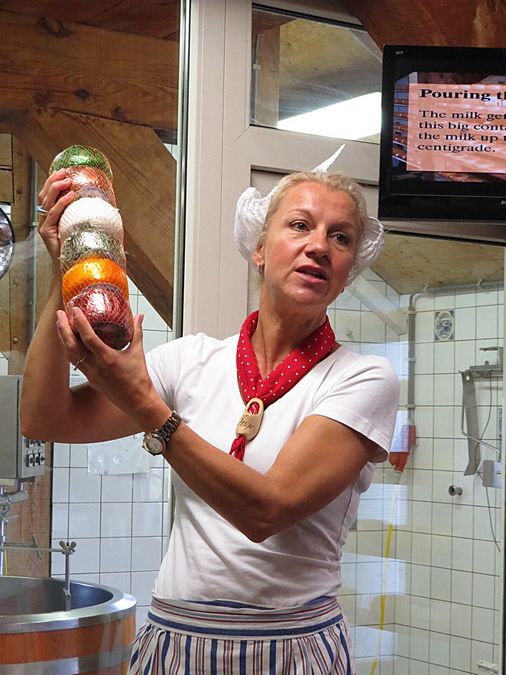
Woman in Catharina Hoeve Cheese Store at Zaanse Schans
explaining about their cheese production.


Pat at Zaanse Schans
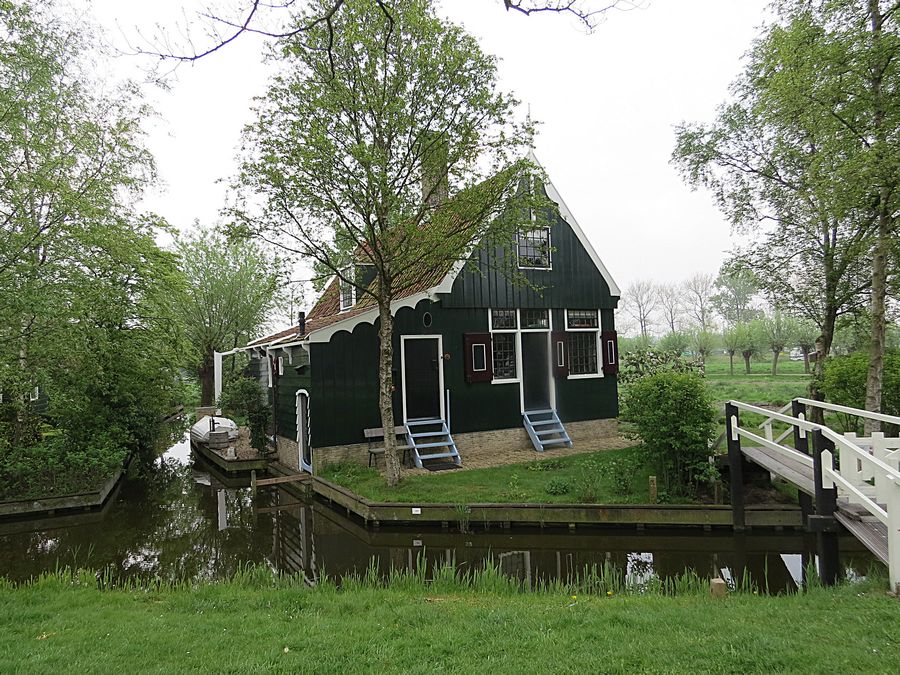
In the 17th century, most homes were wooden, usually 1 story,
and were painted green and white. The gables were often decorated
and the front door, called the death door, was not used excerpt for
weddings and burials.
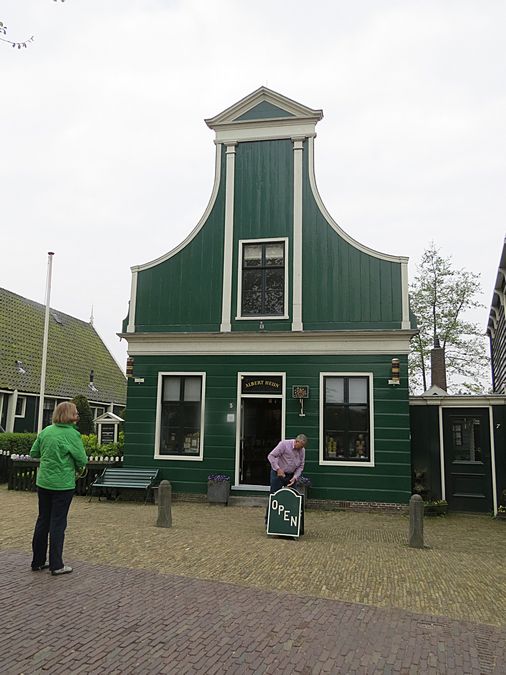
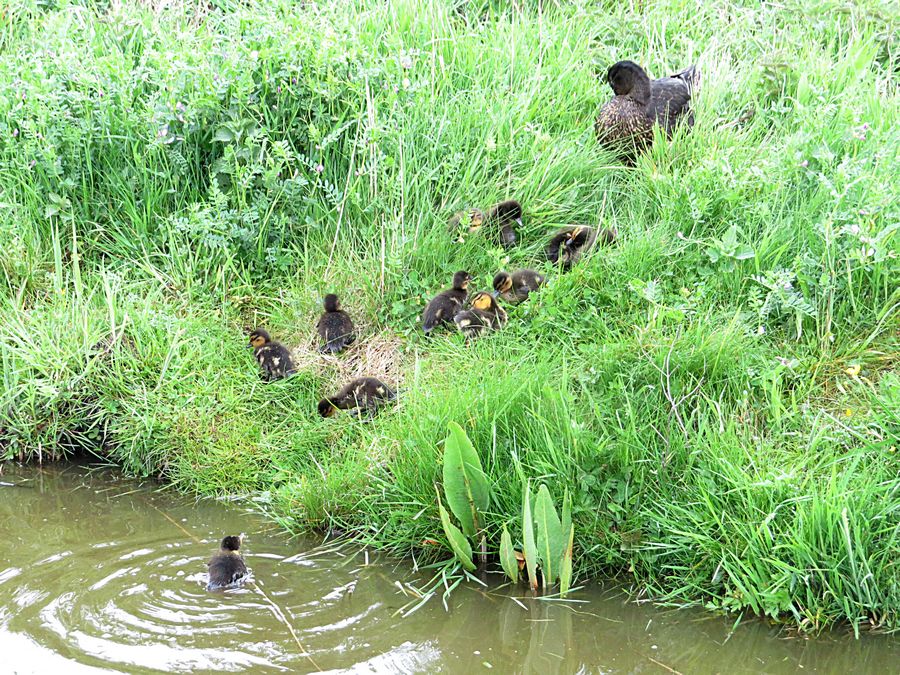
There were numerous water fowl and birds along the canal at Zaanse Schans.

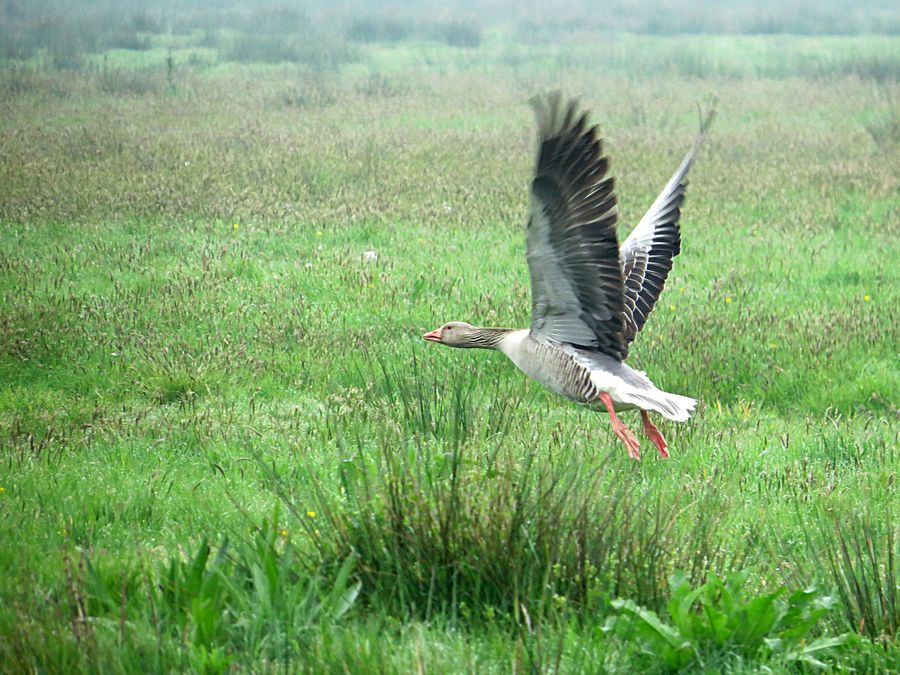
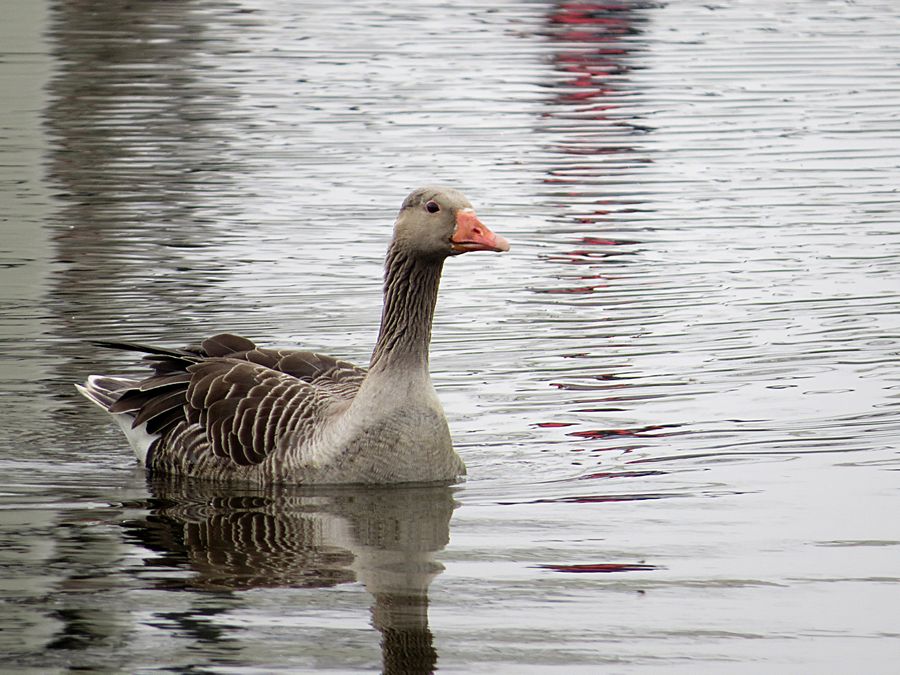

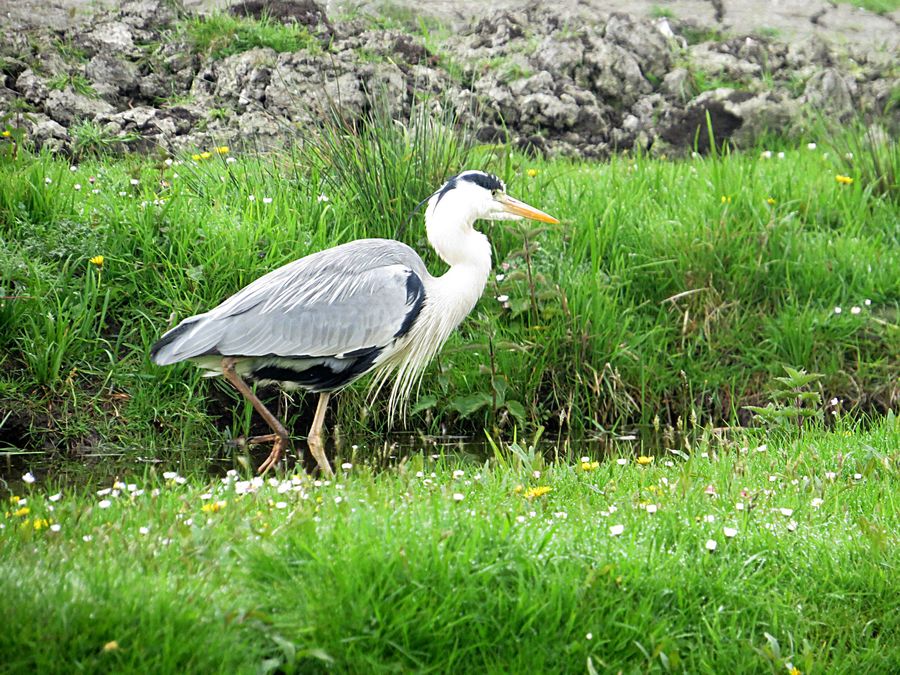

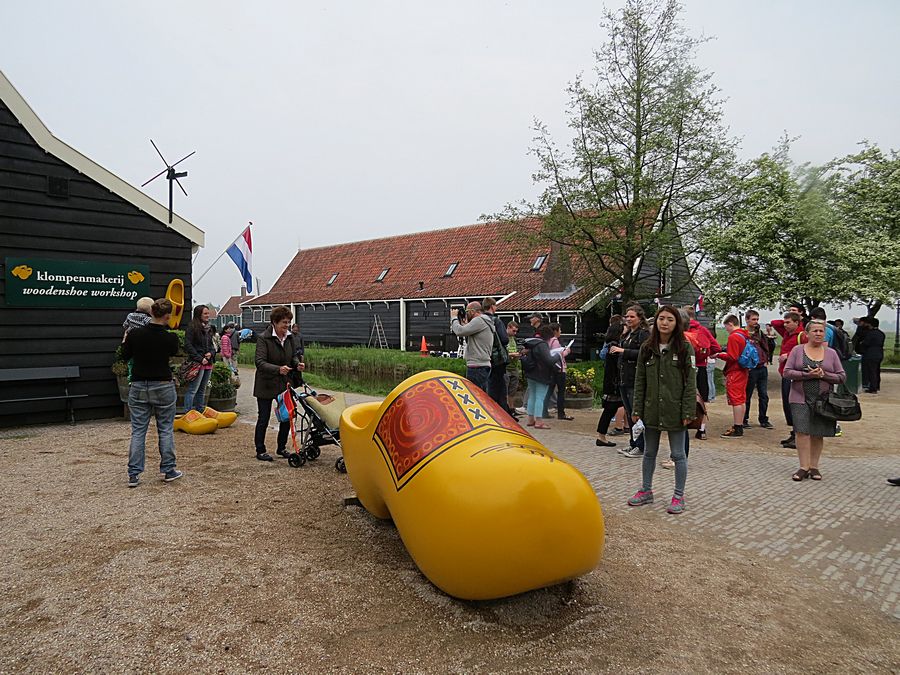
Tourists love to have themselves photographed standing inside
or stepping into
large wooden shoes on display at many tourist locations.
Link to Page 4 - Volendam, Marken, and Haarlem
Pat's Home Page